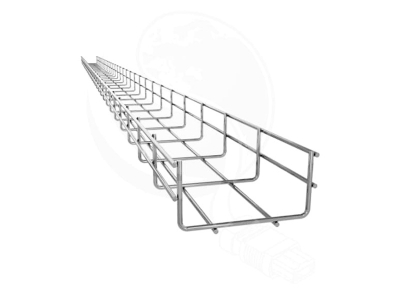What is the impact of the performance of tray cable trays on their effectiveness?
As an important component of cable management systems, tray cable trays have a significant impact on overall performance.
The bearing capacity of tray cable tray refers to the number and weight of cables it can support and accommodate. High performance tray cable trays are usually made of high-strength materials, such as high-strength steel, which have sufficient load-bearing capacity to ensure the stable operation of the cable system. At the same time, the structural design of the bridge is also crucial. A reasonable structure can provide good stability and prevent deformation or damage caused by excessive load or external forces. The heat dissipation performance of tray cable tray has a significant impact on the operation of cable systems. The bottom of tray style cable trays is usually designed with regularly arranged holes, which help dissipate heat from cables, reduce cable temperature, and extend cable service life. In contrast, fully enclosed trough type cable trays may not have the same heat dissipation performance as tray type cable trays. Therefore, in high temperature environments or situations where cables generate a large amount of heat, the heat dissipation performance of tray style cable trays can better meet the requirements. The shielding interference and corrosion resistance of tray cable tray are also important indicators of its performance. Although tray type cable trays may not be as effective in shielding interference as fully enclosed trough type cable trays, they can still meet the requirements in some situations where shielding interference is not a high requirement. Meanwhile, through reasonable surface treatment, the tray type bridge can improve its corrosion resistance and extend its service life.
The adaptability and flexibility of tray cable trays also have a significant impact on their application effectiveness. Tray type cable trays can be customized according to actual needs to adapt to cable management systems with different spans and loads. At the same time, the connection components of the tray type bridge are designed reasonably, and the installation process is simple and fast, which can greatly shorten the construction period. In addition, tray type cable trays can be adjusted and optimized according to the site conditions to meet different cable laying needs. The performance of tray cable tray directly affects the effectiveness of cable management. High performance tray cable trays can provide good cable support and protection, reducing cable damage and failure rates. At the same time, the design of tray style cable trays makes cable laying more neat and beautiful, improving the maintainability and upgradability of the cable system. In addition, tray type cable trays can prevent interference and crossing between cables, improving the stability and reliability of cable systems.
In summary, the performance of tray cable tray has a significant impact on the overall effect. When choosing a tray cable tray, factors such as its load-bearing capacity, heat dissipation performance, shielding interference and corrosion resistance, adaptability and flexibility, and cable management effectiveness should be fully considered to ensure the stable operation and long-term use of the cable system.



